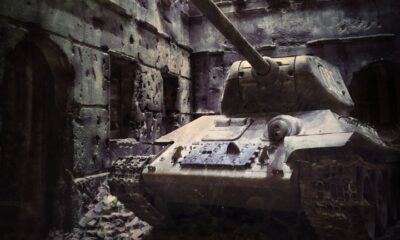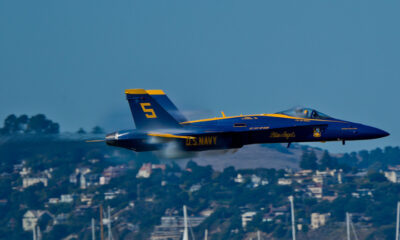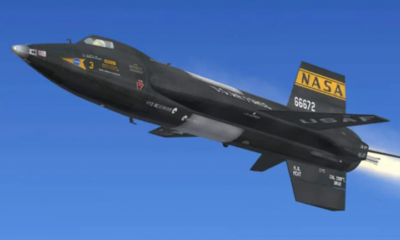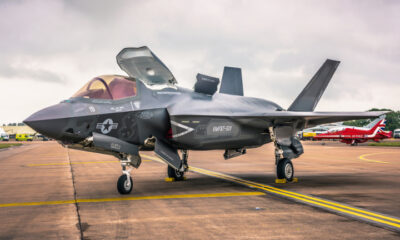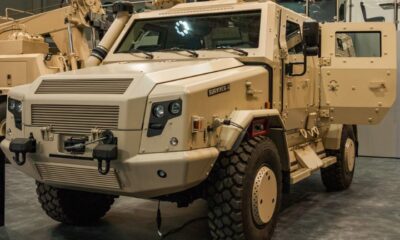MILITARY
12 Amazing Facts About The F-117 Nighthawk
Published
5 months agoon
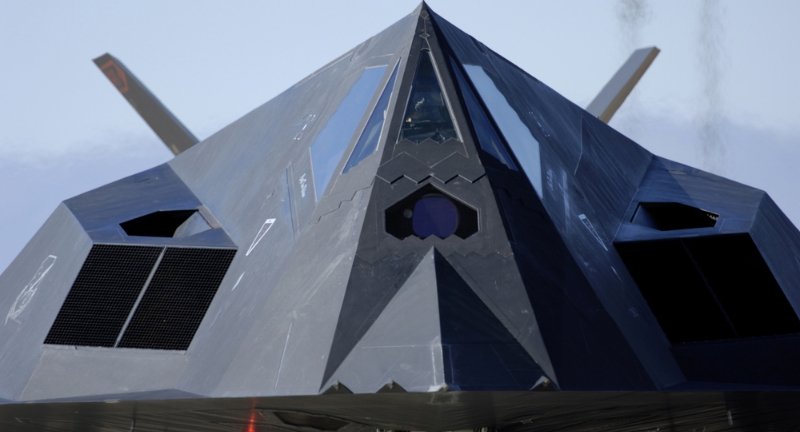
Shutterstock
The Lockheed F-117A Nighthawk, a masterpiece of modern aviation, stands as a testament to the ingenious fusion of technology and strategic design in military aircraft development. Emerging from the shadows of top-secret programs, the F-117A marked its place in history as the world’s first operational stealth aircraft, revolutionizing the realm of aerial warfare. Born out of a need to evade increasingly sophisticated radar systems, its development was spurred by the challenges of the Cold War era, particularly the lessons learned from the Vietnam War and the 1973 Yom Kippur War.
The Nighthawk’s groundbreaking design, characterized by its unique faceted shape and radar-absorbent materials, enabled it to slip undetected into enemy territory, fundamentally altering the principles of engagement in air combat. Equally impressive are its technical specifications: a single-pilot aircraft with formidable dimensions, advanced weaponry capable of precision strikes, and a propulsion system designed for optimum stealth. The F-117A’s legacy is not only defined by its covert operations and strategic impact but also by its role in paving the way for future advancements in stealth technology, solidifying its place in the annals of military aviation history.
Origins in Stealth Technology

USAF
The concept of stealth technology, crucial for the F-117, dates back to the 1960s. Soviet mathematician Pyotr Ufimtsev’s research on radar reflection and edge configuration laid the foundation. This principle suggested that even large aircraft could reduce radar signatures significantly. However, practical application awaited advancements in computers and software in the 1970.
Vietnam War Influence

USAF
The development of the F-117 was significantly influenced by the experiences of the Vietnam War. Sophisticated Soviet surface-to-air missiles in this war demonstrated the need for a stealth aircraft. The 1973 Yom Kippur War further emphasized this requirement. Thus, the F-117 project was initiated as a response to these military challenges.
Public Debut

USAF
The F-117 Nighthawk was publicly unveiled on November 10, 1988, during a Pentagon press briefing. Before this, its existence was one of the most closely guarded secrets in the military. Its combat debut was in the U.S. invasion of Panama in 1989. The aircraft gained widespread fame during its significant role in Operation Desert Storm.
Proposed Variants

Shutterstock
Lockheed proposed several variants of the F-117, including a carrier-based attack aircraft version called the F-117N “Seahawk”. However, the U.S. Navy preferred multi-role warplanes and declined the proposal. Another variant, the “Gray Dragon,” was a daylight variant tested only once. These proposals show the aircraft’s adaptability and Lockheed’s commitment to evolving its capabilities.
Operational Details

Shutterstock
The F-117A Nighthawk was a stealth attack aircraft with high-precision targeting capabilities. It could carry a variety of weapons like BLU-109B, GBU-10, GBU-27 laser-guided bombs, and more. Its first flight was in 1981, and it remained operational in various conflicts including Panama, Desert Storm, Kosovo, Afghanistan, and Iraq. The aircraft was only used for night-time missions.
Retirement and Replacement

Shutterstock
The F-117 was eventually retired, with a formal ceremony in March 2008. Its retirement came as newer, more advanced aircraft like the F-22 Raptor and F-35 Joint Strike Fighter emerged. Even after retirement, the Nighthawk’s stealth technology remained unmatched by other 4th generation fighters. The retired aircraft are stored at the Tonopah Test Range, Nevada, with some kept ready for rapid reactivation if needed.
Design for Stealth

Shutterstock
The F-117’s design focused on minimizing radar detection. Its surfaces and edges were optimized to deflect radar signals away from enemy detectors. The aircraft’s construction involved aluminum and titanium, especially in engine and exhaust areas. This design made it one of the first aircraft to effectively employ stealth technology.
Weapon Limitations Due to Stealth

Shutterstock
The stealth design of the F-117 limited its weapon-carrying capacity. Weapons had to be housed in internal bays, restricting the load it could carry. This design choice led to a higher miss rate against aerial threats during conflicts like the Iraq War. Despite these limitations, the F-117’s ability to strike targets without detection was a significant advantage.
Innovation from Adversity

Shutterstock
The downing of an F-117 by Serbian forces in 1998 provided crucial insights for Russian and Chinese stealth technologies. This incident demonstrated the F-117’s technological superiority at the time, as its design was virtually invisible to contemporary radar systems. This event marked a pivotal moment in global military aviation technology.
Misleading Designation

Shutterstock
Despite its F-117 designation, the aircraft was not a traditional fighter but an attack aircraft. Its design and armament were focused on ground attacks, not air-to-air combat. The designation was chosen to attract top pilots to the program, showcasing the importance of perception in military projects. This decision reflects the unique nature and purpose of the Nighthawk within the U.S. Air Force.
Cockpit Design

USAF
The F-117’s cockpit design was tailored for stealth, with flat, triangular glasses to prevent radar reflections. This design minimized the radar signature, crucial for stealth operations. Reflections from objects like a pilot’s helmet could be larger than the plane’s overall radar signature, so every detail was considered to enhance stealth.
Weapon and Antenna Integration

Shutterstock
To maintain its stealth profile, the F-117’s weapons and antenna systems were integrated into its structure. They were only extended when absolutely necessary. This integration was a critical aspect of its stealth capability, ensuring a minimal radar signature during operations.
Conclusion

Reddit
In conclusion, the Lockheed F-117A Nighthawk represents a remarkable milestone in aviation history, embodying the pinnacle of stealth technology and precision strike capability. Its unique design, characterized by a focus on minimal radar visibility, revolutionized modern warfare tactics. The Nighthawk, with its formidable combination of advanced technology, strategic armament, and cutting-edge aerodynamics, not only dominated the skies in various conflicts but also paved the way for future innovations in stealth aircraft design. Although retired, the legacy of the F-117A endures, symbolizing a significant leap in aeronautical engineering and a testament to human ingenuity in overcoming the challenges of aerial combat. Its story is not just about technological achievement, but also about strategic foresight, serving as a reminder of the ever-evolving nature of military technology and its profound impact on global defense strategies.


